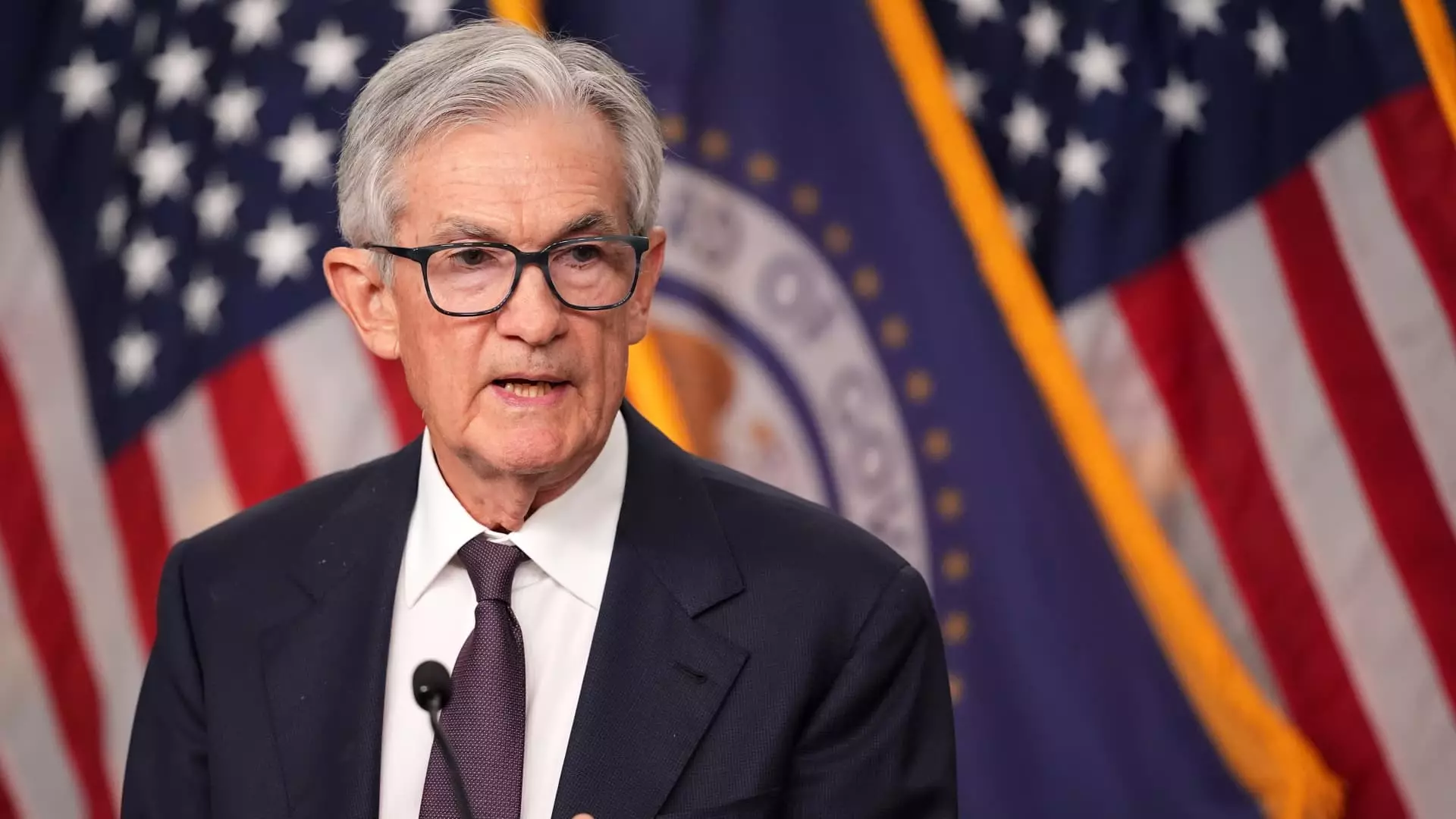The Federal Reserve’s recent deliberations reveal an institution grappling with a tempest of challenges, particularly the potential impact of tariffs on inflation. Amidst mounting uncertainties, policymakers find themselves in a precarious situation where every decision could reverberate throughout the economy. The minutes from the Federal Open Market Committee’s May meeting demonstrate this precariousness, indicating that officials are increasingly concerned about how current trade policies could exacerbate inflationary pressures. With trade relations fluctuating, particularly between the U.S. and China, the potential for disruptive tariffs hangs like a dark cloud over economic forecasting.
The climate of uncertainty is reflected in the Fed’s decision to maintain the federal funds rate steady. Faced with a lack of clarity on the implications of fiscal and trade policies, officials concluded that a cautious approach was warranted. This prudence might seem overly careful in a time when many would advocate for bold economic moves, but the specter of inflation looms large—turning every rate decision into a high-stakes gamble. Policymakers’ awareness of growing vulnerabilities within the labor market further underscores the challenges of fostering consistent economic growth without igniting inflation.
Economic Growth: Strong Yet Fragile
Interestingly, while Federal Reserve officials note that the economy remains solid, the acknowledgment of a “broadly balanced” labor market serves as a warning signal. It’s a delicate balance; one misstep may trigger a domino effect that weakens the foundations of economic progress. The retail sector’s resilience, bolstered by consumer spending, paints a somewhat rosy picture, yet beneath this facade lies growing apprehension about the sustainability of such growth. This orchestration is reminiscent of a finely tuned instrument where even the slightest change in external conditions could lead to discord.
The Federal Reserve’s steadfastness in holding the benchmark rate between 4.25%-4.5% illustrates their intention to mitigate risks, but there is an inherent contradiction. On one hand, officials are evaluating the currents of economic growth, which appear strong; on the other, they are acutely aware of the external threats posed by unpredictable trade policies. This duality manifests the complexity of modern economic governance, where aspirations of achieving both stable employment and low inflation are tangled in an intricate web of policy uncertainties.
Federal Reserve: A Bulwark Against Political Pressure
The political landscape has made the Fed’s mission even more challenging. President Donald Trump’s pressure to lower interest rates represents an incursion into central banking independence that cannot be overlooked. Fed Chair Jerome Powell’s refusal to succumb to political influence exemplifies a commitment to economic principles over whims of political expediency. In an era where short-term gains often overshadow long-term strategy, this determination to uphold the integrity of monetary policy is commendable.
However, the looming question remains: can the Fed maintain its course amidst incessant political maneuvers and a volatile economic backdrop? This tug-of-war between fiscal policy, burgeoning inflation, and political influence underscores the need for a robust monetary policy framework—one that can navigate not only the present challenges but also prepare for future economic uncertainties. The Fed’s previous five-year policy framework, which allowed for temporary inflation above the 2% target, seems fraught with dangers in a time of substantial inflationary shocks. This proposed flexibility could encounter severe backlash if the economic winds shift unfavorably.
The Path Ahead: A Coalition of Coordination
Navigating these turbulent waters necessitates a collaborative approach across various sectors of the economy. The Fed’s commitment to wait for a clearer economic outlook before making further monetary policy changes is prudent. Unfortunately, this cautious strategy can lead to stagnation if timely interventions are not made in response to changing conditions. A coalition of coordination between fiscal and monetary policy will be crucial in ensuring a stable economic environment.
The current policy landscape demands that the Fed remain vigilant and responsive, steering through the choppy waters of inflation and trade. The stakes are high; to mitigate risks effectively, the FOMC must remain unfettered in its decision-making processes while still considering the broader national interest. Balancing these priorities will require vision, bolstered by sound economic insight that transcends partisan divisions. Amidst the storm, the Federal Reserve must emerge as a stabilizing force, ready to guide the economy away from pitfalls and toward sustainable growth.


Leave a Reply